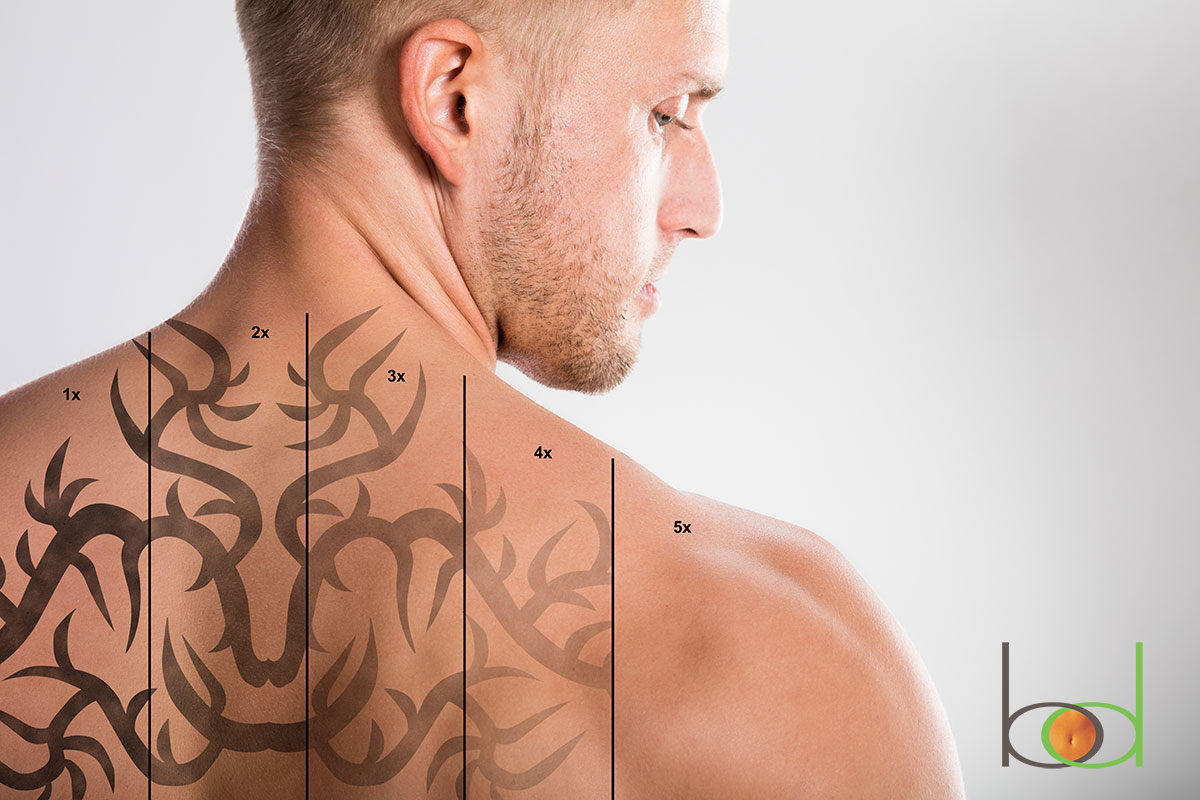While some will say that the development of new technology has come to a screeching halt, the progression of advancements in the tattoo removal industry has seemingly never been so rapid.
Before laser tattoo removal became common in the late 80s, the methods used to remove unwanted ink were borderline barbaric. Most of them consisted of different ways to remove the top layer of the skin, such as dermabrasion, acid treatments, cryosurgery, and skin grafting.
Experiments with lasers on tattoos began in the 1960s, but it wasn’t until the early 80s that testing was done using a Q-switched ruby laser on tattoos in a hospital in Scotland. Since then, several Q-switched lasers have been developed to remove tattoos of different colors and on different skin types. Now, even more new ways of tattoo removal are on the horizon.
PicoWay Lasers
Considered to be the best laser available in the industry at the moment, PicoWay lasers differ from Q-switched lasers as they release 1000 times more energy. This allows it to shatter tattoo ink particles into smaller pieces and lets body’s immune system attack and get rid of more of the ink at once. Ultimately, this leads to less laser tattoo removal treatments for clients and faster results.
The PicoWay’s advanced technology allows medical laser technicians to use this laser on all ink colors, including blues and greens, which can be the most difficult to remove. This method is often preferred by technicians because they don’t have to switch between different Q-switched lasers to treat colorful tattoos, and these lasers are less likely to leave scars behind.
Zimmer Cryogenic Device
One of the biggest reasons people don’t get laser tattoo removal is the fear that treatments will hurt. While most people find the laser to be hardly more than mildly annoying, many people still refuse to have it done. Numbing creams can be an option for some, but many laser clinics will have a Zimmer Cryogenic Device on hand to use simultaneously during treatments. The device uses cold air to cool and numb the skin prior to and during laser tattoo removal treatments to improve comfort, minimize swelling, and reduce irritation. Most people find that the use of this device makes their laser treatments more comfortable and relatively pain-free.
True Laser
Not so much a device as a tattoo removal method, True Laser refers to the three essential factors that need to be considered when seeking laser tattoo removal. The first being the type of device used, as different lasers will provide different results. You don’t want to just opt for the best laser in the industry, but the best laser for your skin type and the ink colors in your tattoo.
The same goes for the second factor, wavelength. You’ll want to be sure the wavelength being emitted from the laser being used is ideal for the color of your ink to ensure removal and reduce the risk of skin damage. Finally, the third factor is to have your tattoo removal process guided by a licensed medical laser technician. Only they will be able to come up with a personalized treatment plan that will get you the results you’re looking for.
Nanotechnology Tattoo Removal
While it’s still being tested, a company named Extatin has developed a topical cream that uses nanotechnology to remove unwanted tattoos. Nanotechnology is a term used to describe the area of technology that deals with dimensions of less than 100 nanometers, such as the manipulation of individual atoms and molecules. They claim to have a product that will deliver non-disruptive drugs into the skin that will bring tattoos to the surface of the skin, allowing them to be simply wiped away.
The company boasts that its product, which is not yet for sale, is a painless, non-scarring, non-toxic solution to the growing problem people are having to try to get rid of old or unwanted tattoos. They claim this process is possible due to breakthroughs made in nanotechnology, as well as cell physiology and molecular biology. So, while this technology is still in the works, we hope to see it come to the market sometime in the near future.
Bisphosphonate Liposomal Tattoo Removal
Also not yet on the market, Bisphosphonate Liposomal tattoo removal is a topical cream designed to target the white blood cells that cause the ink in our tattoos to stick around. When you get a tattoo, the ink pigment gets attacked by specific kinds of white blood cells called macrophages. These white blood cells will trap the ink pigment of your tattoo so that it can’t affect other areas of the body, inevitably protecting you from this foreign substance while still allowing your tattoo to appear on your skin.
Over time, these white blood cells are replaced by new ones as they’re removed from the body through the lymph nodes, which causes our tattoos to naturally fade. This cream will target the white blood cells that have trapped the ink pigment, encouraging them to turn to waste so they can be replaced by new cells that don’t hold the ink pigment. The cream, which was created by a Canadian graduate student, has some time to go before it can hit shelves, but those in fear of what their ink will look like when they hit their seventies will have something to look forward to.
As technology continues to become more advanced in the industry, we can expect tattoo removal to become safer, faster, and relatively easy over time. Who knows how much longer tattoos will be considered a permanent form of body art.






